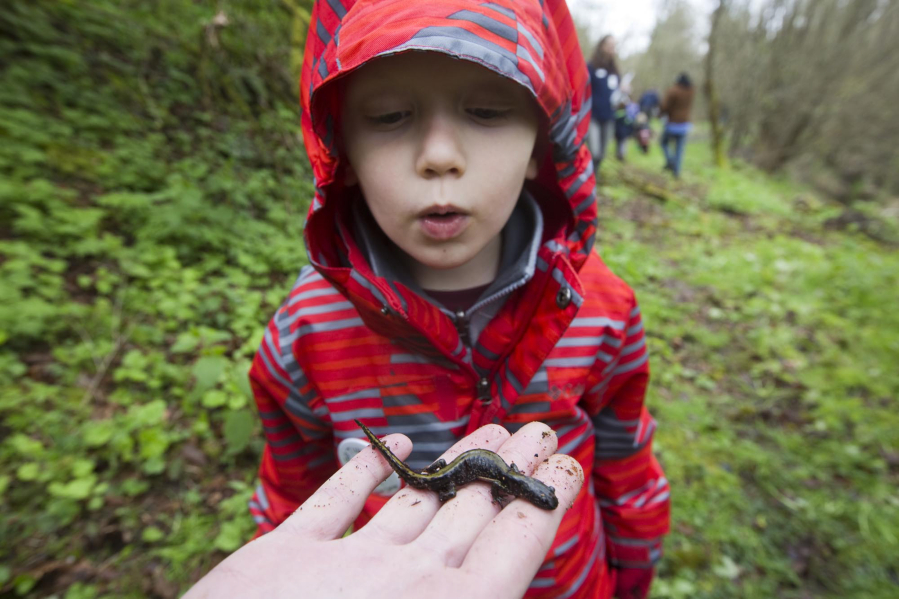Herps were all abound along the edges of Salmon Creek Regional Park — under rocks, along the water, hidden in the grasses — and it was up to the roughly 20 critter counters to find them.
Citizen scientists, mostly parents and young children, spent Saturday morning at a handful of locations around Clark County overturning rocks and combing marshy areas to count the amphibians and reptiles they might have been hiding.
The work was part of the 17th annual Critter Count, a citizen-conducted field survey of local salamanders, frogs, snakes, turtles and other herps that might be living near urban areas.
Those critters are extremely sensitive to water-quality conditions. By keeping track of their numbers year over year, local officials have a better understanding of what challenges the herps face and if investments in habitat restoration in urban areas is paying off. The data is then made available to the public.
“I’m superoptimistic,” said Peter Ritson, the Environmental Center coordinator at Portland Community College, who was leading the count at Salmon Creek. “We’re hammering these areas, but these species are able to keep going.”
Participants started the day at the Water Resources Education Center for a brief training before heading out to the field with nets and plastic cups to catch and count the critters before turning them back out to their environment.
Saturday was the first Critter Count for Paul Gerhardt and his 6-year-old son, Nolan.
“He loves all sorts of animals, and I want him to understand how to take care of the Earth and environment,” Paul Gerhardt said of his son. “I could see us doing this every year.”
The count is a partnership of the city of Vancouver’s Water Resources Education Center; Columbia Springs; CASEE, a program of Battle Ground Public Schools; the U.S. Fish and Wildlife Service; and the Northwest Ecological Research Institute.




